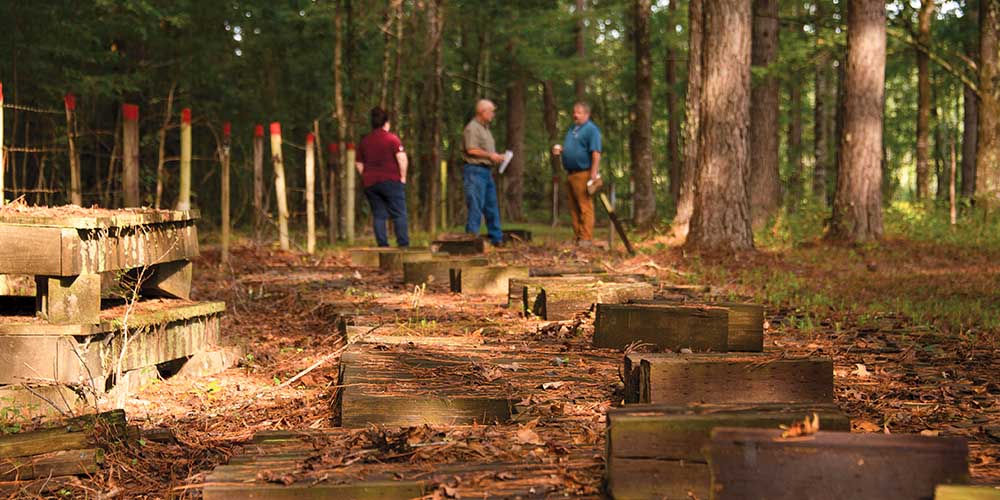Wood Products Protection Stories

Protecting Resources
The department of sustainable bioproducts has been working for over 60 years to discover new ways to make wood products last longer. Dr. Darrel Nicholas, FWRC scientist and sustainable bioproducts professor, has played an integral role in this mission. Before coming to MSU in 1981, he served as vice president and director of research for the Honolulu Wood Treating Company and developed innovative research on wood preservatives at Michigan Technological University. In his nearly four decades at MSU, Nicholas has developed patents for products that set new industry standards for wood preservation and led a U.S. Army-backed project to develop chemical and abrasion resistant packaging materials that could be decontaminated from toxic chemicals. Nicholas’s academic influence is also significant, editing several books and setting three specific standards for the American Wood Protection Association.
2017

FWRC Researchers Seek to Improve Standards in Wood Coating Evaluations
A team of FWRC scientists led by Dr. Beth Stokes, associate professor in the sustainable bioproducts, department, conducted a study of five (narrowed down from 39) consistently performing cross-laminated timber (CLT) coatings. During the study, the team found that visually assessing the boards' deterioration was challenging because of the high number of visual standards and the subjectivity of assessing color, which is the strongest indicator of coating degradation. To address this problem, the team built an artificial intelligence model to better predict changes in the boards' color over time. This model proved to be 95% accurate at predicting color change. The team found that transparent, water-based, alkyd/acrylic resin performed the best in terms of mold and fungus control.
2021

Life of a Wooden Crosstie
Through harsh conditions, the backbone of the rails is built to last. But just how long should wooden crossties carry the load? Researchers from the Forest and Wildlife Research Center and the Railway Tie Association have set out to determine how durable railroad ties are by exposing them to different conditions and preservatives. Dr. Beth Stokes, associate professor in the Department of Sustainable Bioproducts, and her team, are analyzing railway ties made of different wood species treated with different protective systems over the course of several years. The ties are placed on a prepared surface where they are subjected to any weather conditions that occur during the length of the test including rain, wind damage, high humidity, snow, and ice.
These studies will go on for up to 20 years, each tie being checked twice a year, so the team can learn how long-lasting the resources are, and how they can be best used. This research is funded by the Railway Tie Association and member companies of the Southern Pressure Treaters’ Association.